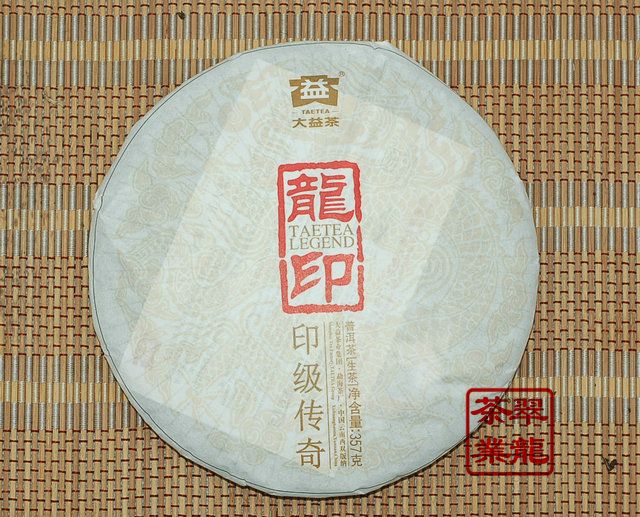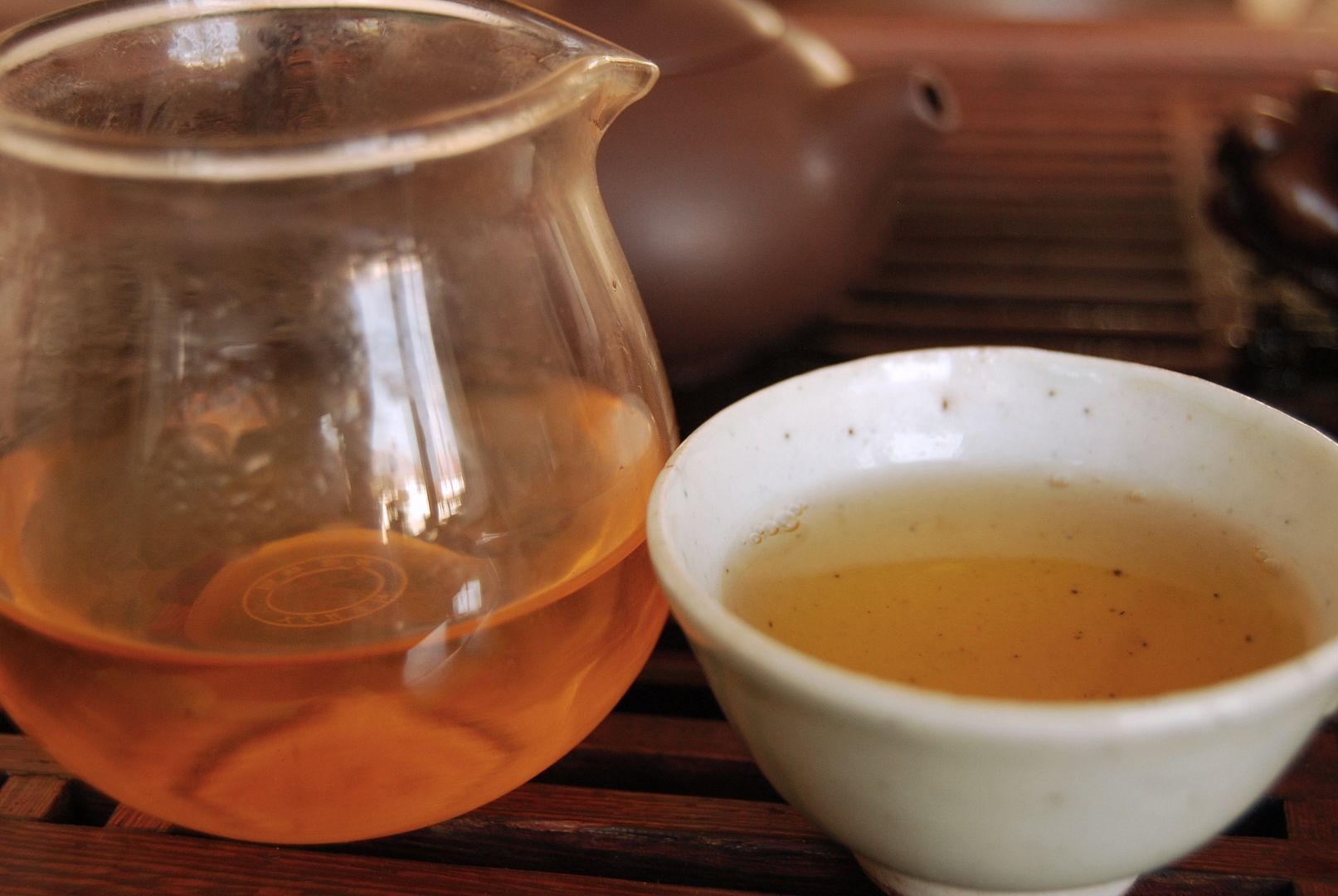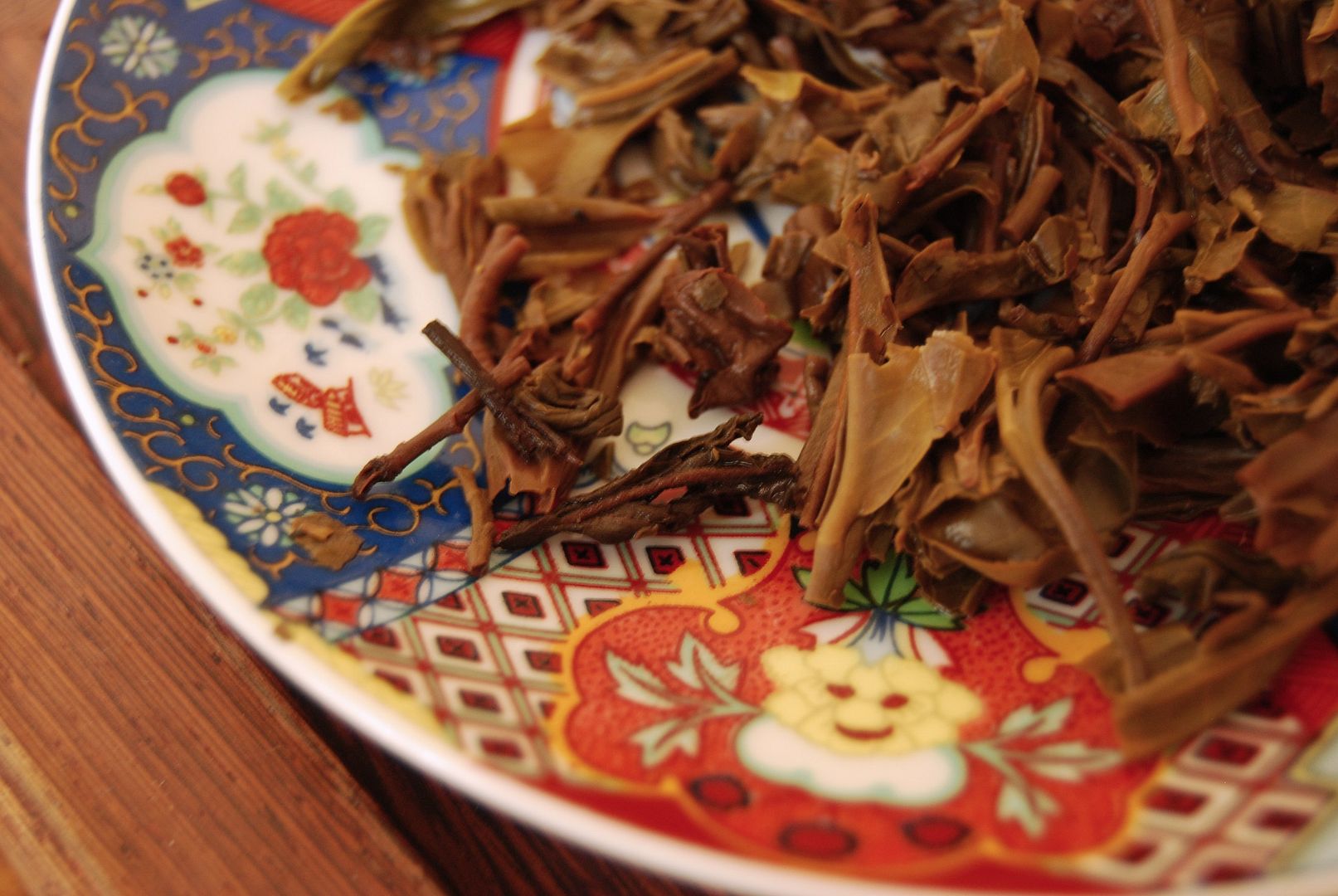Picture the scene: you live in a country where investments are not all that easy to make, inflation is increasing, and where you have accumulated a modest sum on which you would like to see some return greater than that offered by the (state-run) banks. What do you do?
You invest in commodities that promise increased prices. Ideally, you would like to invest in a commodity that one can "corner" without having to invest truly vast sums, such that smaller units of investment can be deployed. Yet which commodities?
Mainland Chinese have speculated in this wise on multifarious commodities, even down to the most mundane: garlic was the target of speculative investment, for example.
2012 Dayi "Longyin"
Dayi "special" cakes are, for good or ill, a current target of such speculative investment. While the pu'ercha boom of 2006 was naive, in that the entire market was subject to speculation, the Dayi "specials" interest occurs on a much more limited scale: one can buy, for example, much of the supply of 2012 Dayi "Longyin" and thereby "corner" this commodity, while the scatter-gun approach of 2006 required much more serious investment.
There is one thing that most speculators have in common, and is a point of departure for you and me, Gentle Reader: we, as drinkers, actually care about the tea, rather than its price.
I am reminded of Oscar Wilde, from The Picture of Dorian Gray: "Nowadays, people know the price of everything and the value of nothing." I rather like Lord Henry's character.
So, then, let us consider its value.
This "Longyin" means "Dragon mark", but it is not the "Dragon Year" cake from the Dayi series commemorating each animal year.
Immediatly, we know that we are faced with Dayi tea: it is plantation, it contains small- and medium-sized leaves, and its smells straightforwardly fresh and sweet.
It has a "big", smoky scent, and (as pictured above) turns out a decidedly solid orange colour, neither of which is usual for unaged Dayi. That is, unless we consider the dubiously-roasted recipes, such as 0622.
This is immediately confirmed upon tasting: some of the kuwei [good bitterness] has been exchanged for the roasted, almost "blackened" character of 0622, which always reminds me of modern Xiaguan "specials", which in turn seem to be cleaned-up versions of Baoyan.
It is compact, and well-assembled: a typical Dayi example of how one might make "mainstream" pu'ercha. Its body has a dense sweetness that is encouraging [despite a portion being processed away]: the green kuwei of taidicha [plantation tea] is easily identified.
This has the quality of a cake of £20 value [approx. $30], although I am sure that, in reality, its price far exceeds that, due to market bubbling. The roasted sweetness gives it a sweet-cereal character in its base, which remains in the mouth for some time after the tea is gone.
As always, much of the story is told when we turn the wet leaves out for inspection: there is a minor proportion of the blend that has been deliberately blackened, which you might be able to see in the above. These heavily-processed leaves co-exist in the blend with the raw, flat green leaves of usual Dayi, where the latter give the tea much of its power.
While drinking this tea, Apache e-mailed me the actual price: it is currently 650 RM, which exceeds its value many times over. I was happy to read from Apache that the original price was 200 RMB, almost exactly in line with my expectation of its value. That is, when this quite straightforward, slightly-processed cake was originally released, it was priced fairly.
Its tripling in price is something that only the most ardant speculator would consider: surely, if pu'ercha drinkers have any tastebuds of their own, they will refuse to pay the rather staggering sum of 650 RMB for an unaged, rather standard, piece of Dayi.
It would be beneficial if this bubble burst sooner, rather than later...






2 comments:
I think those darker leaves are probably just blended leaves with more age, rather than having much different processing. I was not a huge fan of this cake, but I am interested to see how it ages. One thing is for sure, the current price is more reflective of good marketing than of the tea quality
Dear Twodog,
I would have thought that it was a mixed-year blend, but those leaves really are shrivelled and black. Either way, 'tis certainly no Dayi's finest hour... :)
Toodlepip,
Hobbes
Post a Comment